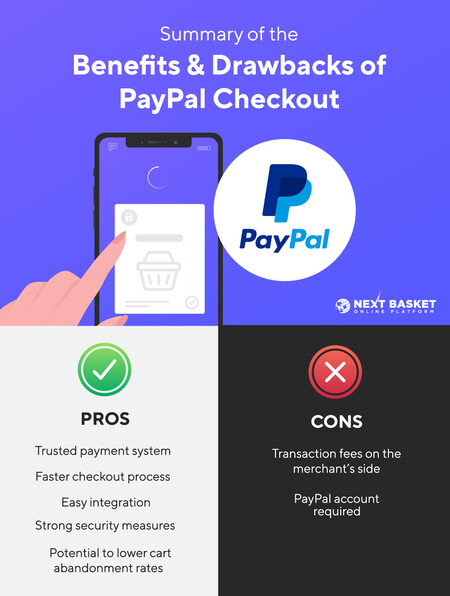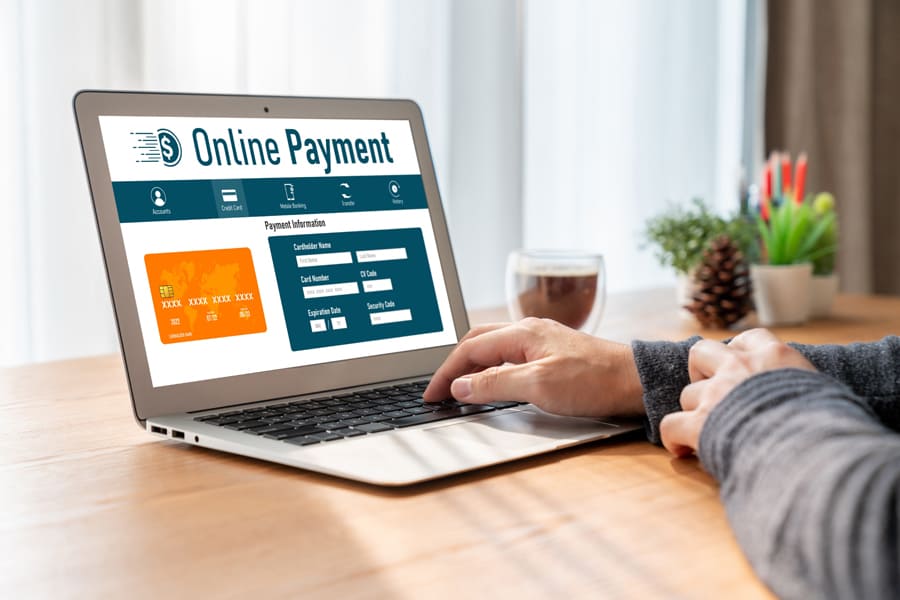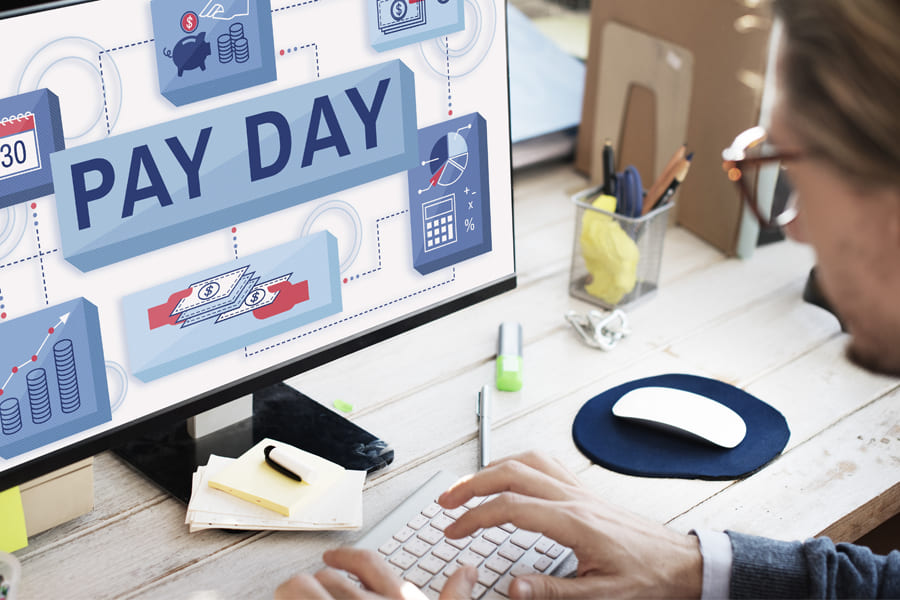Over the years, e-Commerce payment solutions have transformed, and one that has evolved to adapt to the ever-changing digital landscape is PayPal Checkout. Being a secure and user-friendly checkout process provider, PayPal has accrued a balance of trust and value in customers worldwide.
In this article, we will cover the benefits, setup process, and optimization of PayPal Checkout, helping you harness this tool’s full potential. From setting up a business account to customizing your checkout page, we’ll delve into every relevant aspect of the PayPal checkout process.
By the end, you should feel equipped with the necessary knowledge not just to integrate this payment method but to configure it for the most optimal user experience so your customers can rely on it and be satisfied during their shopping journey.

Introduction to PayPal Checkout
PayPal’s checkout method takes up a very straightforward name – PayPal Checkout – and is a system merchants can integrate into their online store, giving customers an additional method to perform payments easily.
Customers with a PayPal account can use this checkout process to skip certain steps like filling out forms with card and shipping details manually. When they choose PayPal Checkout as their preferred method, customers are redirected to PayPal’s site to confirm their details and are then returned to the online store to finalize their purchase.
With an average active user count of over 400 million per year, PayPal is one of the most preferred payment methods.
Let’s see what makes its checkout option so special!
Benefits of using PayPal Checkout

There are several advantages to using PayPal Checkout in your online store related to trust-building, speed, cart abandonment, integration, and fraud detection.
Increased trust and credibility with customers
As one of the oldest and most recognized payment services, millions trust PayPal, and having it on your website can influence customers’ purchase decisions.
Thus, your website’s credibility can also be increased in the eyes of an unsure user. And what business owner doesn’t want that?
Faster checkout process for customers
Shoppers who already own a PayPal account don’t have to input their card information for every purchase and instead can log into their PayPal account and confirm the transaction.
Expediting the process also enhances the checkout experience while encouraging the finalization of the purchase and making it less of a hassle to make another purchase.
Reduced cart abandonment rates
Shopping cart abandonment is not uncommon in ecommerce, which is why online stores rely on various forms of checkout integration like PayPal.
Coupled with the speediness and trust mentioned earlier, PayPal Checkout offers different payment options that drive customers to finish their purchases, effectively reducing cart abandonment rates.
Easy integration with most ecommerce platforms
Whichever ecommerce platform you’re running your store on, it’s relatively straightforward to integrate the PayPal payment method.
You can find PayPal Checkout as one of the apps in the built-in app store of the more popular platforms, making it a breeze to set it up as one of the alternative payment methods on your website.
Comprehensive fraud protection and security measures
Online security is a top priority for businesses and customers, which is why PayPal is widely regarded as a trusted payment option.
It offers fraud protection measures like automatic encryption for all transactions and advanced fraud screening to protect customer data and financial information robustly.
Creating a PayPal business account
To set up PayPal Checkout, you must have a business account, which you must link to your ecommerce platform. After that, follow these steps:
- Visit the PayPal website.
- Click on the Sign Up button.
- Choose Business Account and click Next.
- Enter your business details, ensuring all information is up-to-date before you click Continue.
- You may be asked to follow additional on-screen instructions to complete the process.
- Verify your email address from the verification email you will receive.
- Provide any additional business information if necessary.
Once you have a business account, you will also get a unique client ID, serving as an identifier of PayPal clients, which can be used to connect your account to an ecommerce platform.
Linking your PayPal account to your ecommerce platform
Depending on the ecommerce platform you are using, the process may vary, but the gist of it is as follows:
- Log into your ecommerce platform and navigate to the payment settings.
- Look for an option saying something similar to Add Payment Method, from where you have to find and select PayPal.
- Enter your PayPal business account email address and click on Link Account or a similar command.
Once linked, you should see PayPal as a payment option during checkout.
Configuring PayPal Checkout settings
In order to configure the PayPal Checkout settings, you need to perform the following:
- Log into your PayPal Business account.
- Navigate to the Seller Preferences section.
- Click on Website payments under Products and Services.
- Here, you can tweak many settings, such as allowing customers to purchase multiple items at the same time, allowing unregistered users to make payments, and setting up your preferred shipping methods.
- Once content with your changes, don’t forget to click Save.

Customizing your PayPal Checkout page
You can customize several aspects within your PayPal Checkout page, but there is also a general customization feature available.
- Again, log into your PayPal Business account and navigate to the Seller Preferences section.
- Click on Custom Payment Pages in the Selling online section.
- From here, you can change the appearance of the checkout page. Below, we’ve outlined the main features you can customize.
- Click on Save before exiting the page.
Adding your company logo and branding
When your logo and branding are visible throughout the checkout process, the shopping experience flows more naturally.
You can upload your logo from the customization settings and choose where it appears on the checkout page.
Adjusting color schemes and fonts
A good idea is to adjust the color scheme and fonts so that PayPal Checkout is closer to your brand’s desired look.
When you customize the fonts and colors, you can provide your customers with a more consistent and professional look that matches your website’s unique style.
Enabling additional payment methods
PayPal checkout allows you to enable alternative payment methods like PayPal Credit and Venmo. Also, local payment methods are available, based on the customer’s location. In order to set up there, follow the next steps:
- Log into your PayPal business account.
- Navigate to the PayPal Checkout settings by clicking on the gear icon.
- Depending on your location, you will need to look for an option called Alternate Payment Methods or PayPal Optional.
- If the option is disabled, you will have to enable it.
- Save your changes.
Now, your customers should have more options to perform payments, sometimes even without a PayPal account.
Optimizing the checkout process for PayPal users
When optimizing the checkout process, you need to focus on basic principles that you have already likely implemented in parts of your website. Some of them are:
- Simplify your checkout process, removing unnecessary steps and only asking for essential information.
- Use PayPal’s Express Checkout feature so returning customers can make even quicker checkouts.
- Offer guest checkout options for users who wish to avoid making an account on your website.
- Keep your store user-friendly and responsive for users on both desktop and mobile devices.
- Use clear and concise language in your shipping and return policies and any additional information about a purchase.
- Run test transactions whenever you implement a new payment method like PayPal Checkout to identify and fix potential issues.

Ensuring payment security with PayPal Checkout
There are several ways to secure payments on your online store through PayPal Checkout. Let’s explore them below:
- Enable PayPal’s security features like Fraud Protection, Seller Protection, and Secure Technology in your account settings if they are not on by default.
- Update your website’s security if it is vulnerable.
- Educate your customers on the security measures you’ve implemented.
- Regularly update your PayPal security details, like passwords and authentication methods, to prevent unauthorized access.
- Monitor your transactions regularly to spot and report suspicious activities (most ecommerce platforms have a built-in feature to help you with that).
Tracking PayPal Checkout metrics and analytics
To track detailed metrics and analytics when customers use PayPal Checkout, we recommend you follow this checklist:
- Set up PayPal’s transaction reporting feature by first going to the Reports section in your business account’s dashboard.
- Look for Transaction Reports in the drop-down menu.
- Create a new report from the reports dashboard by clicking on Create Report.
- Choose the type of report you wish to create, select the date range and any filters you would like to apply.
- Click Run Report to generate the report, and click Save Settings if you plan to run this report frequently.
Additionally, you can integrate PayPal with an analytics tool like Google Analytics to keep all data about your store in the same place, combining it with PayPal’s Insights and Financial Summaries to get a view over sales patterns, buyer demographics, and more.
Summary of the benefits and drawbacks of PayPal Checkout
Here is what you need to know about the pros and cons of using PayPal Checkout:
| Pros | Cons |
| Trusted payment system | Transaction fees on the merchant’s side |
| Faster checkout process | PayPal account required |
| Easy integration | |
| Strong security measures | |
| Potential to lower cart abandonment rates |
Trends and predictions for the future of online payment processing
As we look into the future, we see online payment processing constantly evolving to meet the varying customer needs. Trends we foresee include:
- The use of mobile payments to an even further extent.
- Greater emphasis on security and fraud prevention (especially in third-world countries).
- A push for even more streamlined and user-friendly checkout experiences.
PayPal has a set of features recognized internationally and well-positioned to meet these changes. It is a valuable tool for most ecommerce businesses that make enough to withstand PayPal Checkout’s transaction fees and is a preferred payment method likely to stay for long, considering its hundreds-of-million user base.
Frequently asked questions
Can customers make one-time payments through PayPal checkout?
Yes, and they can do it without creating an account.
Does PayPal Checkout allow third-party autofill options?
Yes, you can use autofill add-ons and the like, which makes the checkout process even quicker.
Can I use promo codes with PayPal Checkout?
Typically, promo codes are handled on your ecommerce platform, but customers can still use them before paying with PayPal to reduce the final purchase price.
Can I set up recurring payments with PayPal Checkout?
You can set up subscriptions and other recurring payments, including PayPal Credit for installment payments.